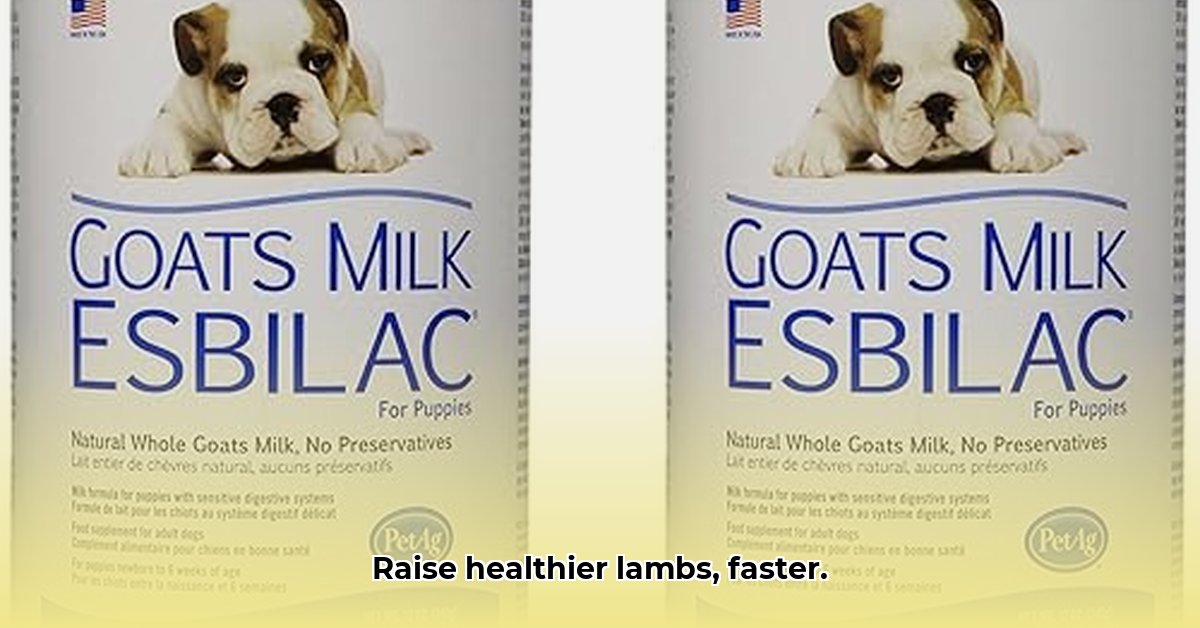
Choosing the right lamb milk replacer is crucial for healthy, thriving lambs and a profitable, sustainable farm. This guide focuses on two popular options from Tractor Supply – Dumor Blue Ribbon and Lifeline Lamb Plus – offering a practical framework for making an informed decision. We'll examine key factors beyond simple cost comparisons, emphasizing sustainable practices and maximizing your return on investment. For more information on milk replacers from Tractor Supply, check out this helpful resource.
Understanding Your Needs: A Personalized Approach to Lamb Nutrition
Before comparing specific products, define your farming goals. What are your priorities? Rapid weight gain for early market entry? Minimizing health issues and maximizing lamb survival rates? Or is cost efficiency your primary concern? And how much weight do you place on environmentally sustainable practices? Your answers will shape your choice significantly. There’s no one-size-fits-all solution; the best milk replacer is the one that best aligns with your unique needs. Isn't it surprising how many farmers overlook this crucial first step?
Dumor Blue Ribbon vs. Lifeline Lamb Plus: A Practical Comparison
Comprehensive, side-by-side nutritional comparisons between Dumor Blue Ribbon and Lifeline Lamb Plus are currently unavailable publicly. However, a practical approach, focusing on key factors, enables a well-informed decision.
Key Factors for Selection:
Growth Rates: The Ultimate Metric: The most critical factor is how effectively each milk replacer promotes lamb growth. The most reliable method is an on-farm trial. Divide your lambs into two groups, feeding each a different replacer. Meticulously track weight gain over a specific period. This hands-on approach provides accurate data for your unique conditions, far surpassing generalized marketing claims. How much weight gain can you realistically expect?
Cost-Effectiveness: Maximizing Your Investment: Price per bag is misleading. Calculate the cost per pound of weight gain. This involves factoring in the replacer's price, mixing costs, and the observed weight gain in your trial. The product offering the greatest weight gain per dollar spent is the most economically efficient, regardless of initial purchase price. What's the actual cost-benefit ratio for each option?
Sustainability: Farming Responsibly: While detailed environmental impact data might be limited, prioritize brands emphasizing sustainable sourcing and manufacturing. Look for transparent information about ingredient origins and production methods. Are there any certifications or statements signifying a commitment to sustainable farming? A responsible approach benefits both your farm and the planet.
Ingredient Quality: Nourishing Your Lambs: While product labels offer insight, in-depth information on ingredient quality may require reaching out to manufacturers. Consider the source and quality of the constituent proteins, fats, and vitamins. High-quality ingredients generally translate to healthier, faster-growing lambs. What's the difference in ingredient composition and source?
Beyond the Replacer: Sustainable Lamb Farming Practices
Choosing the right milk replacer is only one piece of the puzzle. Sustainable lamb farming encompasses a broader range of practices:
Pasture Management: Implementing rotational grazing maximizes pasture health, providing natural nutrients while minimizing overgrazing and parasite problems.
Breed Selection: Choosing sheep breeds suited to your climate and environment can enhance their overall health and growth, reducing the need for supplemental feeding.
Disease Prevention: Comprehensive disease prevention protocols (vaccinations, parasite control) are crucial for minimizing health issues and maximizing lamb survival rates.
Waste Management: Effective manure management protects water quality and reduces environmental impact, contributing to sustainable farming.
Your Action Plan: Turning Knowledge into Results
Thorough Research: Contact Dumor Blue Ribbon and Lifeline Lamb Plus manufacturers to obtain detailed information on their ingredients, sourcing, manufacturing processes, and sustainability initiatives.
On-Farm Trials: Conduct a controlled comparison trial, meticulously recording weight changes, feed consumption, and any health observations.
Cost Analysis: Calculate the cost per pound of weight gain for each replacer, incorporating all associated expenses.
Continuous Improvement: Farming is a dynamic process. Regularly evaluate your approach, adjusting it as needed based on your observations and results.
The path to a successful and sustainable lamb farming operation involves continuous learning and adaptation. This guide provides a framework for making an informed choice regarding lamb milk replacers, contributing to a more profitable and environmentally responsible farm.